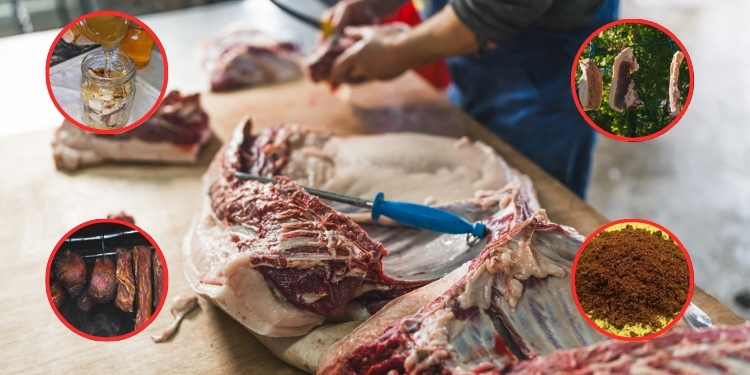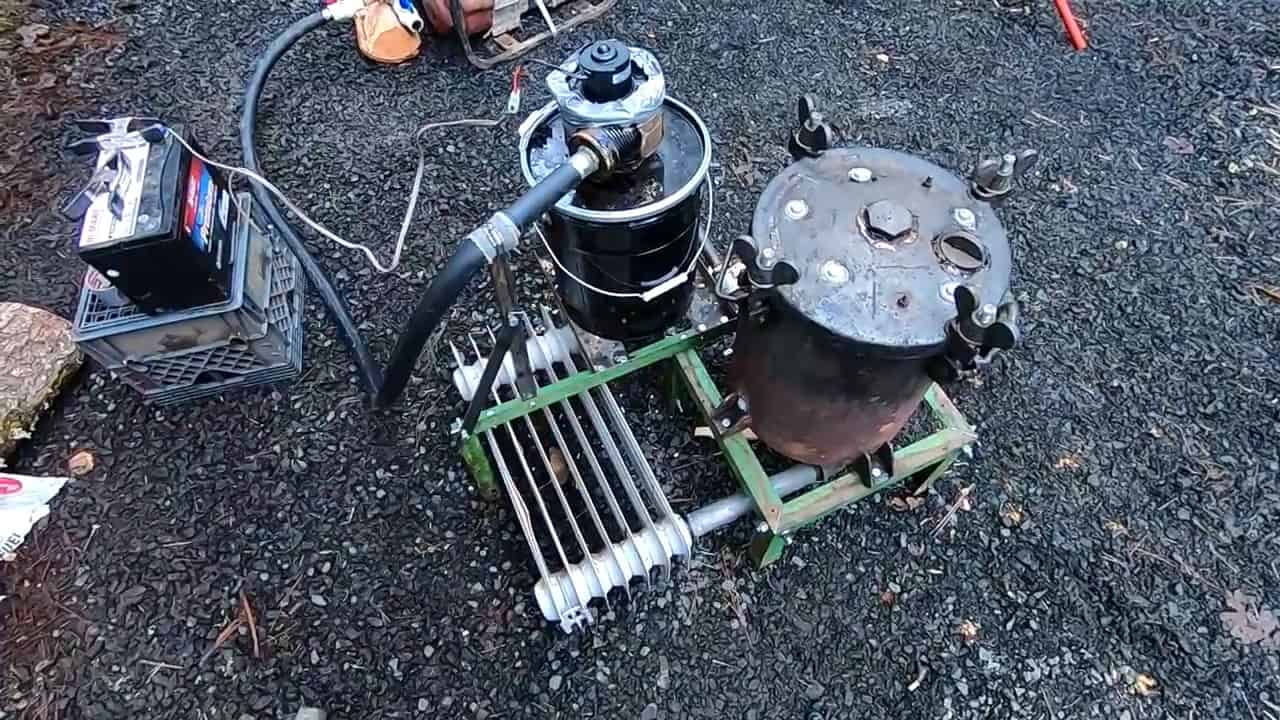When you’re preparing for a crisis, your mind might first go to stocking up on staples like rice and beans. But imagine this: the grid is down, grocery stores are empty, and your family is hungry. What if a single pig—an animal weighing about 275 pounds—could provide enough food to sustain a family of four for three months? This isn’t just a hypothetical; it’s a practical, sustainable strategy that our ancestors relied on and that can be a genuine lifeline when you need it most.
A pig is a prepper’s dream because it can be used from “nose-to-tail,” providing not just meat but also fat, organs, skin, and bones. All of these parts are crucial for keeping a family well-fed and strong. In a long-term survival scenario, a single pig, properly managed and preserved, can provide a wealth of calories and nutrients, making it one of the most valuable resources you can have.
Sourcing Your Pig: Raise or Buy?
Your journey to a full freezer (or pantry) of pork starts with a choice: do you raise the pig yourself, or do you buy one from a local farm? The right choice depends on your resources, skills, and living situation.
Raising Your Own Pig
This option requires significant effort but offers a direct connection to your food source.
- Space and Shelter: You’ll need about 100–200 square feet for a pen, strong fencing (pigs are master escape artists), and a simple shelter to protect them from the elements.
- Feed and Care: A pig will need about 500–600 pounds of feed over six to eight months to reach slaughter weight. You can use kitchen scraps, forage, or grain. Daily care includes providing fresh water and cleaning the pen to prevent disease.
- Cost and Butchering: Expect to spend around $200–$400 on feed and setup. When it’s time for butchering, you can either learn to do it yourself with the right tools (a sharp knife and bone saw) or pay a local farm or butcher to handle it for a fee ($50–$150).
Buying from a Local Farm
This is an ideal solution for those with limited space, like urban or suburban preppers.
- Cost: A 275-pound live pig costs roughly $400–$825. You can also buy a half or quarter pig to save money.
- Convenience: Most farms will handle the slaughter and basic butchering, providing a dressed carcass (about 205 pounds) that you can process further. You can also join a meat CSA to get a steady supply without the hassle of raising the animal.
Butchering and Preservation: Maximizing Your Yield
A 275-pound pig is a goldmine if you know how to use it all. After slaughter, you’re left with a hanging weight of about 205 pounds. Once deboned and trimmed, this yields about 155–165 pounds of prime meat and fat. But in a survival scenario, you can’t afford to stop there.
The key to long-term food security is a zero-waste approach. Bones, organs, skin, and even blood can provide an additional 45–55 pounds of usable food. That brings your total to over 200 pounds of nutrition, enough for 600–700 meals when you plan wisely.
- Meat: Use shoulders, hams, and loins for roasts, stews, or to make sausage and ground meat.
- Fat: Render fat into lard for cooking, baking, or preserving meat. Lard is also useful for making soap.
- Bones: Boil them to make a rich, nutrient-dense stock for soups and stews.
- Organs: Liver, heart, and kidneys are nutritional powerhouses. Use them for pâtés or add them to sausages and stews.
- Skin: Fry the skin into crispy cracklings or add it to stews for extra richness and flavor.
Beyond food, the value of a pig extends to bartering. Properly cured hams, jars of canned pork, or rendered lard could be powerful trade items when cash has no value.
Preservation is Key to Avoid Spoilage
In a grid-down scenario, food spoils quickly. Without proper preservation, all your hard work and investment can disappear in a matter of days. You must prioritize what to eat or preserve first. Organs and fresh cuts spoil the fastest and should be cooked or preserved within a day or two.
Here are the most effective methods for long-term storage:
- Curing: Use a non-iodized salt mixture to cure hams and other cuts. This can preserve meat for six to twelve months.
- Smoking: Smoking with woods like hickory or applewood can extend shelf life, especially when combined with curing.
- Pressure Canning: This is one of the most reliable methods for long-term food storage. Using a pressure canner, you can store pork for one to two years.
- Drying: You can dehydrate thin slices of lean pork to make jerky, which can last six to twelve months. For an even longer shelf life, make meat powder from lean cuts.
Remember, a pig can offer more than just meat. The fat provides high-energy lard, and organ meats are packed with essential vitamins and minerals that will be hard to find in a crisis. The bones and skin provide collagen, which is great for joint and gut health.
A 3-Month Food Plan for a Family of Four
Let’s make this practical. With about 160 pounds of prime meat and fat, plus the additional nutrition from other parts, you’re looking at about three months of meals for a family of four, assuming you supplement with other staples like rice, beans, or garden vegetables.
To avoid “pork fatigue,” rotate through different meals using preserved cuts, smoked meats, and canned pork.
Sample Meal Plan for One Day
- Breakfast: A pork and bean skillet, combining canned pork with cooked pinto beans and rendered lard.
- Lunch: A hearty pork broth vegetable soup, made from smoked pork and a rich bone broth.
- Dinner: Pork fried rice with cracklings, using ground pork sausage and topping it with crispy pork skin for texture and extra calories.
The key to success is proper meal planning and storage. Start learning these skills now by connecting with local farmers and practicing preservation techniques. A single pig can be your most powerful asset in a crisis, securing your family’s food supply and giving you a valuable resource to trade.
What’s your next step toward food independence?




